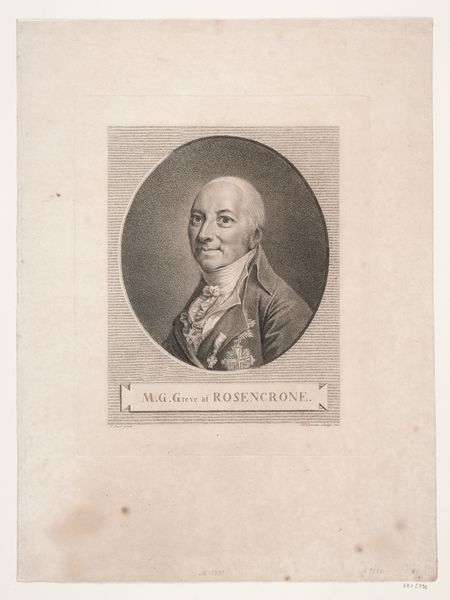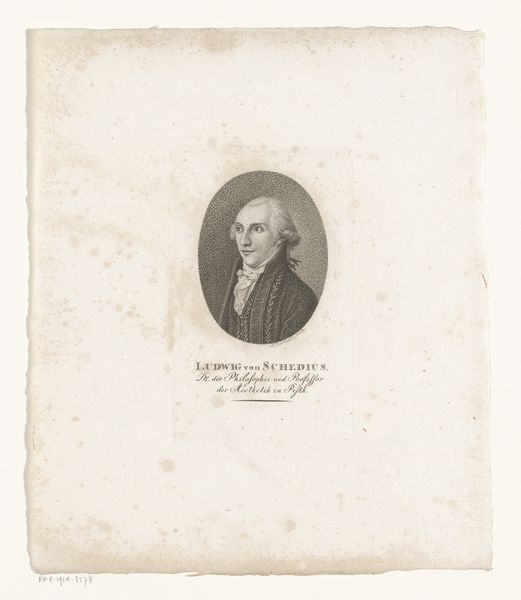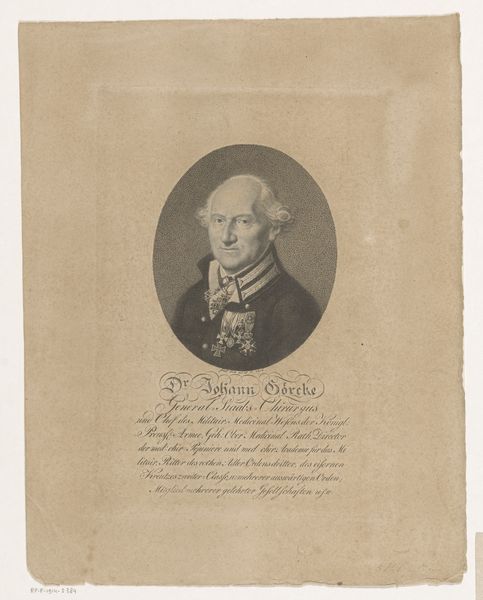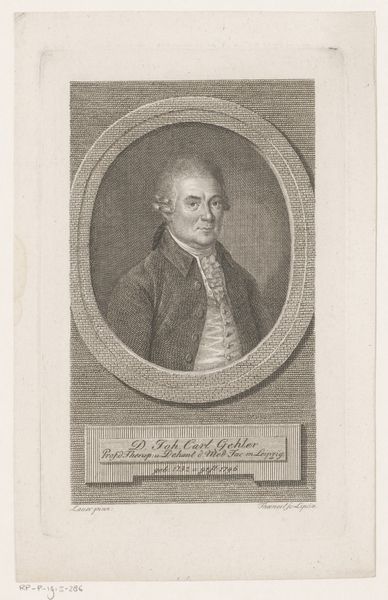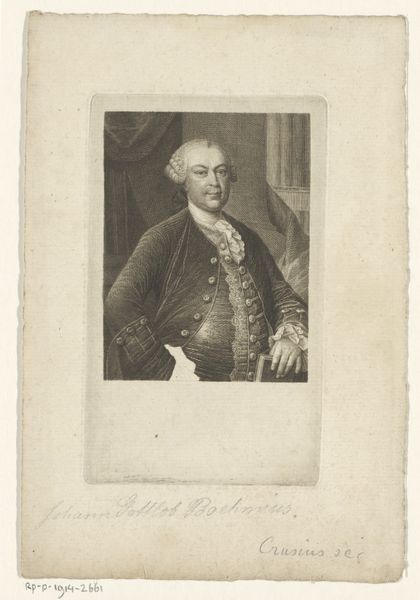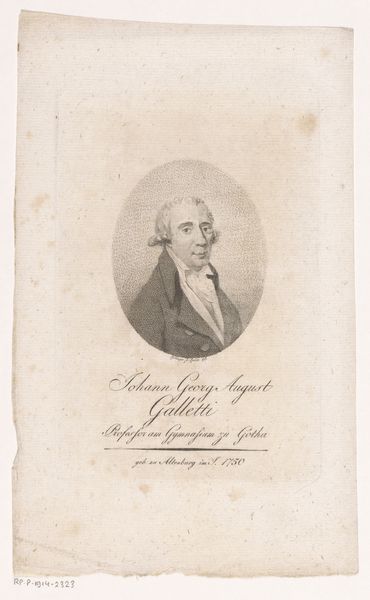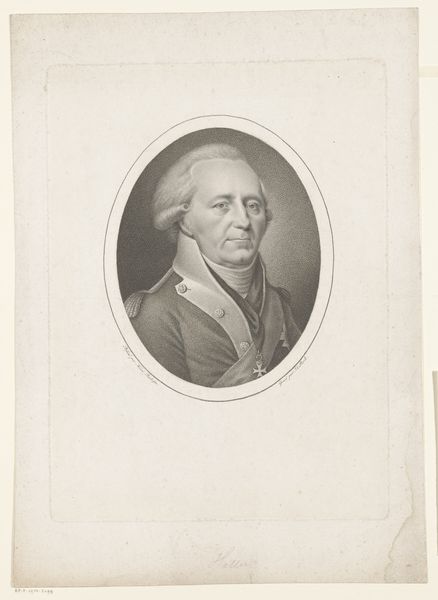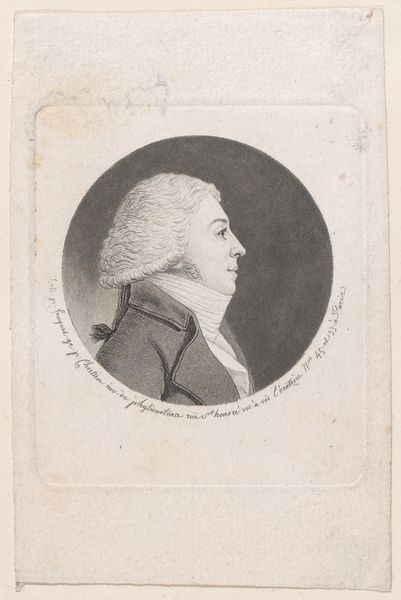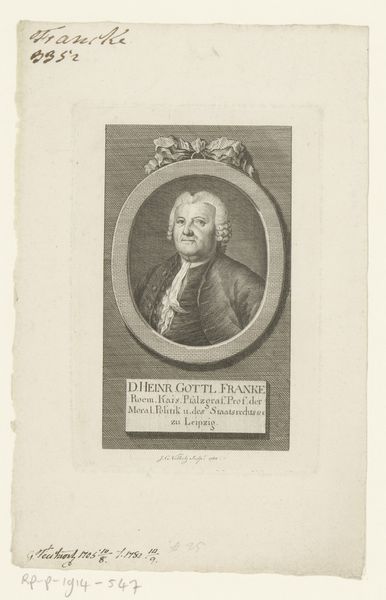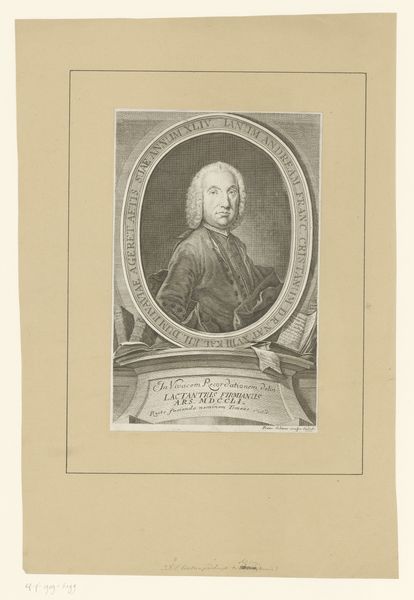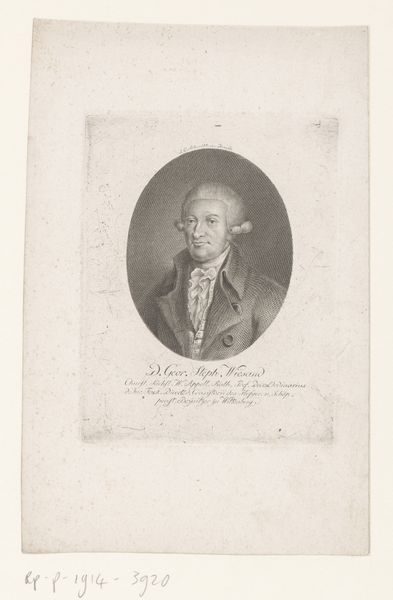
drawing, print, paper, graphite, engraving
#
portrait
#
pencil drawn
#
drawing
#
neoclacissism
#
aged paper
# print
#
pencil sketch
#
old engraving style
#
paper
#
form
#
graphite
#
pencil work
#
history-painting
#
engraving
Dimensions: height 175 mm, width 114 mm
Copyright: Rijks Museum: Open Domain
Editor: Here we have a portrait of Johann Christoph Wilhelm von Steck, created sometime between 1760 and 1813. It appears to be a graphite drawing, or perhaps an engraving on paper. There's something about the precision of the lines that gives it a formal, almost cold feel. What can you tell me about it? Curator: Looking at the work as a material object shifts that "cold" assessment considerably, doesn’t it? Consider the production process. This wasn’t simply sketched; it’s an engraving, likely made using a metal plate, tools for incision, and a printing press. Editor: Right, that level of detail, the fine lines…it speaks to the labor involved. Curator: Exactly! Think about the social context: portraits like these were often commissioned to project an image of power and status. So, consider the economics of art production here, too. Who was able to afford such a luxury? Editor: Someone of Johann Christoph Wilhelm von Steck's standing, I imagine. The engraving suggests permanence, a kind of declaration. Curator: And how does the materiality speak to ideas around high art versus craft? Is an engraving on paper as valued as a painting? Does the "print" undermine its artistry in any way, through notions of reproduction? Editor: I hadn’t thought about it that way. It is interesting to consider the context in which something is made and the cultural definitions of different artistic practices. Thanks! Curator: And considering the materials also invites questions about who made this. Who was the engraver? Often these skilled artisans were anonymous. Considering such labour highlights the role of making in assigning value.
Comments
No comments
Be the first to comment and join the conversation on the ultimate creative platform.
